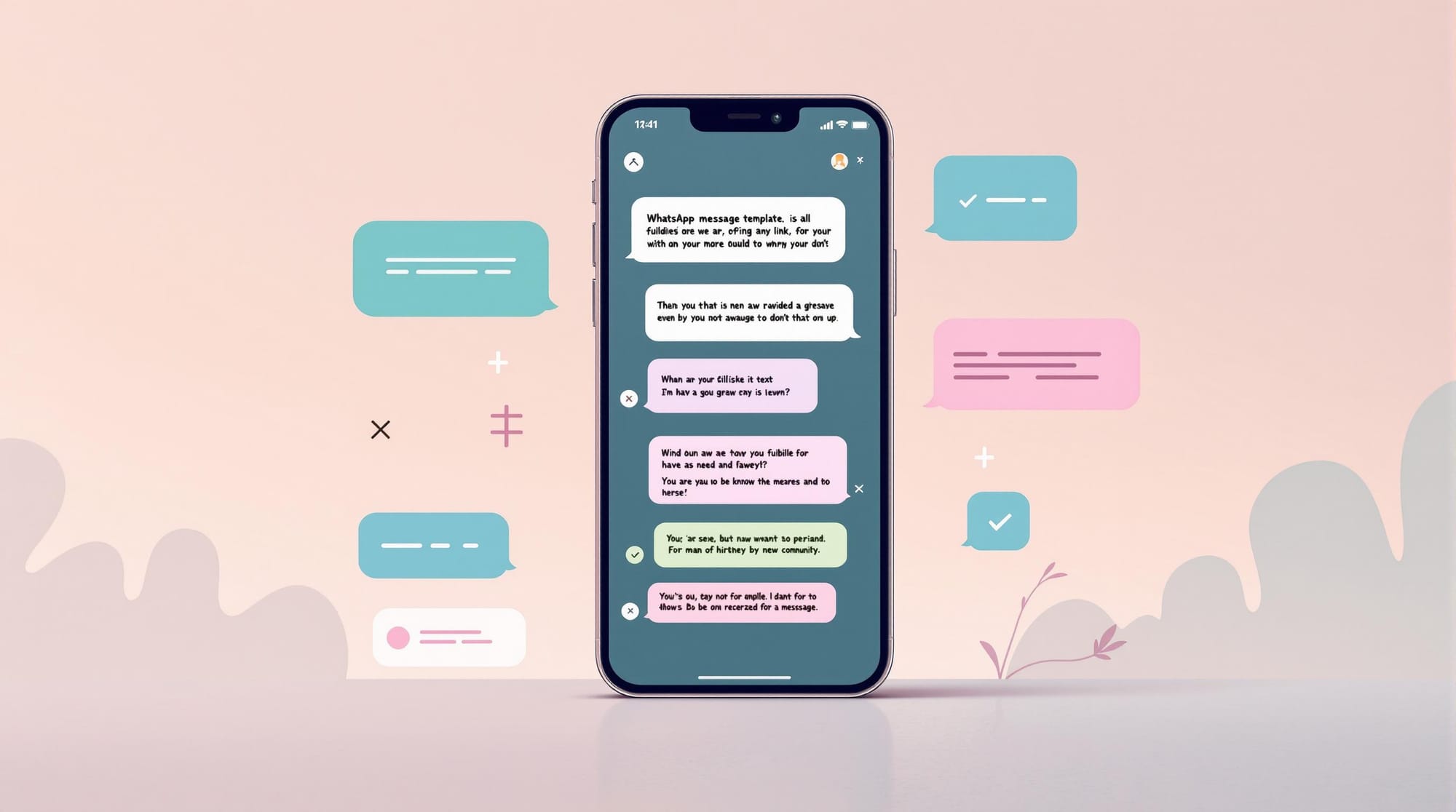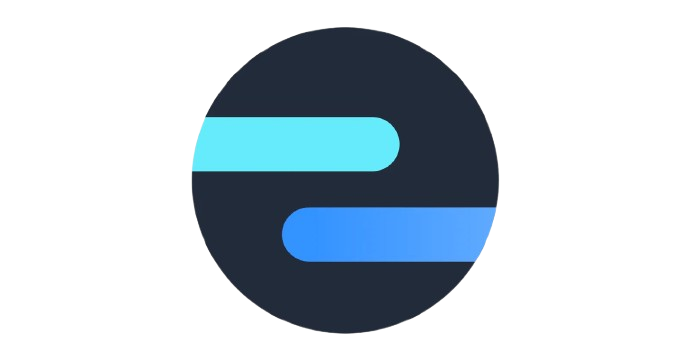WhatsApp Message Templates: 5 Best Practices
Learn to create effective WhatsApp message templates with best practices for communication, organization, and customer engagement.

Want to boost your business communication on WhatsApp? Here's how to create effective message templates:
- Build clear templates
- Use the right writing style and tone
- Follow WhatsApp's rules
- Add interactive features
- Organize your templates efficiently
Key points:
- WhatsApp templates have a 98% open rate
- They're mandatory for businesses starting chats
- Templates can be used for support, updates, and marketing
- WhatsApp must approve all templates before use
Creating effective templates:
- Write clear headers (under 20 characters)
- Organize content with important info first
- Use variables correctly ({{1}}, {{2}}, etc.)
- Stay within the 1,024 character limit
Remember:
- Keep messages simple and friendly
- Adjust for different regions and cultures
- Follow WhatsApp's business rules and quality standards
- Use buttons and call-to-action features wisely
- Track template performance regularly
Related video from YouTube
How to Build Clear Templates
Want to create WhatsApp message templates that grab attention and get your point across? Here's how to do it right.
Writing Good Headers
Your header is like a first impression. Make it count. Ditch vague stuff like "Update" and go for clear, specific headers. Think "Order Confirmation" or "Appointment Reminder."
Keep it short and sweet - under 20 characters works best on mobile screens.
Organizing Message Content
Start with the most important info, then add details. Break it up into bite-sized chunks. Like this:
"Hi {{1}}! Order #{{2}} for {{3}} confirmed. Delivery: {{4}}. Track: {{5}}. Questions? Just reply. Thanks for choosing us!"
See how that covers all the bases without rambling?
Using Variables Correctly
Variables make your messages personal. WhatsApp uses {{1}}, {{2}}, etc. for things like names or order numbers. Sprinkle them in naturally.
A few rules:
- Use the right format ({{1}}, {{2}})
- Number them in order
- Don't end your message with a variable
Working with Character Limits
You've got 1,024 characters. Make 'em count:
- Focus on what matters
- Keep it simple
- Don't repeat yourself
- Use emojis sparingly (but they can add a nice touch)
Short and sweet often works best. As WhatsApp messaging pro Esraa Osama puts it:
"Your message should be easy to understand. Use simple words & short sentences. Avoid jargon that might confuse your audience."
Stick to these tips, and you'll be crafting clear, effective templates in no time.
Writing Style and Tone
Crafting WhatsApp message templates is all about finding the sweet spot between friendly and professional. Think of it as chatting with a friend who happens to work at the company. Let's break it down.
Keep Messages Simple
When it comes to WhatsApp templates, simplicity is your best friend. Your goal? Get your point across quickly and clearly. Here's how:
- Talk like a real person: Ditch the fancy words. Write like you're texting a buddy.
- Be brief: Aim for under 1,024 characters. Break things up into easy-to-digest bits.
- Stick to the essentials: What does your customer NEED to know? Focus on that.
- Chat, don't lecture: Keep it warm and welcoming.
Here's a template that nails it:
Hey {{1}}! Order #{{2}} is on the move. Should arrive {{3}}. Track it: {{4}}. Questions? Just hit reply. Thanks for shopping with us!
See how it covers all the bases without overloading the reader? That's what you're aiming for.
Adjust for Different Regions
Talking to customers around the world? You'll need to tweak your approach. Here's how:
- Use the right language: WhatsApp offers multiple language options. Pick the right one for your customer.
- Mind the culture: What's cool in California might not fly in Cairo. Do your homework on local norms.
- Watch the clock: Nobody likes a 3 AM ping. Be mindful of time zones when sending messages.
- Go local: Throw in references to local events or holidays when it makes sense.
- Keep it simple: Avoid sayings or slang that might not translate well.
Check out how the same message can change for different regions:
US style:
Hey {{1}}! Your order's out for delivery. ETA: {{2}}. Track it here: {{3}}. Questions? Just reply!
UK style:
Hello {{1}}, Your order is on its way, expected arrival: {{2}}. Track it here: {{3}}. Any questions? Please reply.
Notice how the UK version is a bit more formal? That's cultural differences at work.
Remember, the goal is to sound human while keeping things professional. As Zoho Cares puts it:
"When it comes to WhatsApp message templates, less is more."
Stick to that, and you'll be golden.
Following WhatsApp Rules

WhatsApp's message template rules aren't just suggestions - they're must-follows. Let's break down the key guidelines you need to know.
WhatsApp Business Rules
Here's the scoop on WhatsApp's business messaging rules:
- Only use approved templates to start conversations.
- You've got a 24-hour window to respond freely after a customer messages you. After that, it's back to approved templates.
- If someone wants out, let them go. No pestering allowed.
- Keep your WhatsApp Business profile fresh with up-to-date customer support info.
- Get the green light before sending messages. WhatsApp says:
"Obtain opt-in permission from recipients confirming that they wish to receive messages or calls from you on WhatsApp."
Template Categories
As of June 1, 2023, WhatsApp streamlined its template categories:
1. Marketing: For your promo offers and product news.
2. Utility: Think order updates and appointment reminders.
3. Authentication: For sending those secure access codes. (Heads up: Not all providers support this yet.)
Picking the right category matters. It affects how WhatsApp handles your messages and what opt-in rules apply.
Quality Standards
WhatsApp's not just rubber-stamping templates. They've got standards:
- Keep it simple and clear. No head-scratchers allowed.
- Make it useful. No "Hey, just checking in" fluff.
- Format it right. Don't bunch up those variables.
- Play by the rules. Follow WhatsApp's Commerce and Business Policies.
Here's a template that made the cut:
"👋 Welcome {{1}}. What company do you work for?"
And one that didn't:
"Reminder: {{1}}"
See the difference? The good one's clear, personal, and sparks a conversation. The dud? It's vague and doesn't offer much.
WhatsApp can give your templates a thumbs up or down at any time. They usually decide within a day, but sometimes it takes two for a human once-over.
If your template gets the boot, don't sweat it. You can tweak and try again, or if you think they got it wrong, make your case. Just remember to include a sample to back up your appeal.
Adding Interactive Features
WhatsApp's interactive features have changed the game for business-customer engagement. Let's look at how buttons and quick replies can boost your response rates and make customer interactions smoother.
Using Buttons
WhatsApp offers two button types:
1. Quick Reply Buttons
These let customers respond with pre-set messages. It's like giving them a menu of responses to choose from.
2. Call-to-Action (CTA) Buttons
These buttons can do things like start a phone call, open a website, or copy a coupon code. They're designed to get customers to take specific actions.
Here's how to make these buttons work for you:
- Keep it simple: Stick to 3 quick reply buttons max per message. You don't want to overwhelm your customers.
- Be specific: Use clear button text. Instead of "Learn More", try "See Product Details".
- Test and tweak: Try different button combos. See what your audience clicks on most and adjust from there.
"WhatsApp buttons can guide users through a logical chat flow, cutting down on confusion." - Saurav Singh, Content Writer.
Real businesses are seeing results:
- Disney+ Hotstar used buttons for subscription renewals. Users could renew with one click.
- Adidas India promoted a new membership with a "Join for Free" button. It made signing up a breeze.
Adding Call-to-Action
Smart CTA placement can really boost engagement. Here's how to do it right:
1. Position matters
Put your most important CTA button at the top. People tend to click the first option they see.
2. Use action words
"Shop Now", "Book Appointment", or "Get 20% Off" work better than vague text.
3. Create urgency
Try phrases like "Limited Time Offer" or "Only 5 Spots Left" to encourage quick action.
4. Match the customer journey
Use CTAs that fit where the customer is. "Track Order" works for a post-purchase message, while "View Menu" is great for a restaurant promo.
Here's a solid interactive message template:
Hey [Customer Name]! 👋 We've got your order [#Order Number] confirmed. 🎉 It should arrive by [Delivery Date]. 🚚 What would you like to do?
[Track your order] [See more items] [Get help]
This template gives clear options for immediate action. It improves the customer experience and might even lead to more sales.
Organizing Templates
Let's talk about keeping your WhatsApp message templates in order. It's not just about being tidy - it's about making your business run smoother.
Template Names
Naming your templates right is like having a well-organized toolbox. You want to grab the right tool quickly, right? Here's how to do it:
1. Keep it simple
Think order_confirmation or welcome_message. These names tell you exactly what the template does.
2. Follow the rules
WhatsApp is picky. Use lowercase letters, numbers, and underscores. That's it. No spaces, no fancy characters, no emojis.
3. Be brief
You've got 512 characters to play with, but shorter is better. Aim for under 50 if you can.
4. Be consistent
When you're juggling multiple templates, a system helps. Try something like:
purpose_audience_version(e.g.,welcome_newcustomer_v1)department_purpose_type(e.g.,sales_followup_sms)
Remember, if you can't find it, you can't use it. As Plivo says:
"When managing multiple templates for your business, having everything in one place is crucial."
Checking Results
Once your templates are out there, you need to know how they're doing. Here's the scoop:
Quality ratings: WhatsApp grades your templates as low (red), medium (yellow), or high (green). Keep an eye on these.
Key metrics: Watch these numbers:
- Delivery rate (aim for 90-95%)
- Open rate (shoot for 85-95%)
- Click-through rate (15-20% is good)
- Reply rate (35-40% is solid)
- Conversion rate (45-60% is great)
Use your tools: Many platforms have built-in analytics. If you're using Intercom with Octopods, for example, you can see how your templates are doing right from your dashboard.
Check the 'Top Block Reason': This tells you why people might be blocking your messages. Use this info to get better.
Set goals: Know what you want each template to achieve. Sales? Better customer service? Having clear objectives makes it easier to measure success.
Review regularly: Set a schedule to look at your template performance. Weekly or monthly works well. This helps you spot trends and make changes when needed.
Try A/B testing: Test different versions of your templates. Sometimes, small changes can make a big difference.
Remember, it's not just about sending messages - it's about connecting with your customers. As one expert puts it:
"WhatsApp determines your template quality rating based on how they were sent in the past 24 hours and received by the customers."
Conclusion
Creating effective WhatsApp message templates isn't rocket science, but it does take some know-how. Let's break it down:
First things first: get permission. As the Gallabox Blog puts it:
"Customer opt-ins are a cornerstone of successful WhatsApp marketing campaigns."
No opt-in? No message. Simple as that.
Now, when you're crafting your templates:
Keep it simple. Ditch the jargon. Write like you're talking to a friend.
Make it personal. Use those variables to make each message feel tailor-made.
Play by the rules. WhatsApp's policies aren't just suggestions. Follow them.
Add some interactivity. Buttons and calls-to-action can work wonders. Just look at Disney+ Hotstar's one-click renewal button. Smart move.
Track your results. Aim for delivery rates of 90-95% and open rates of 85-95%. If you're not hitting these numbers, it's time to tweak your approach.
Here's the bottom line: WhatsApp messaging isn't about bombarding people with info. It's about building relationships. So keep your customer's experience front and center.
Stick to these guidelines, and you'll be crafting messages that hit the mark - clear, relevant, and respectful of your customers' preferences. And that's the secret sauce for WhatsApp messaging success.
FAQs
How long does it take for WhatsApp template to be approved?
WhatsApp template approval is key for your business messaging. Here's the scoop:
Typically, it takes up to 24 hours. After you submit your template, WhatsApp's team reviews it daily. They're making sure it follows their rules and won't be used for spam.
"It can take up to 24 hours for an approval decision to be made." - WhatsApp Business Team
Here's what happens after you submit:
1. You get notified: WhatsApp Manager shows you the decision.
2. Email alert: Business Manager admins get an email about the approval status.
Want faster approval? Make your templates clear and follow WhatsApp's policies. It's that simple.
Sometimes it might take longer if WhatsApp is busy or your template needs extra checking. If it's been over 24 hours, go ahead and ask support what's up.
But here's the thing: approval is just the start. Your template goes to 'Active - Quality pending' status after approval. WhatsApp keeps an eye on how your messages do to make sure they're top-notch.

